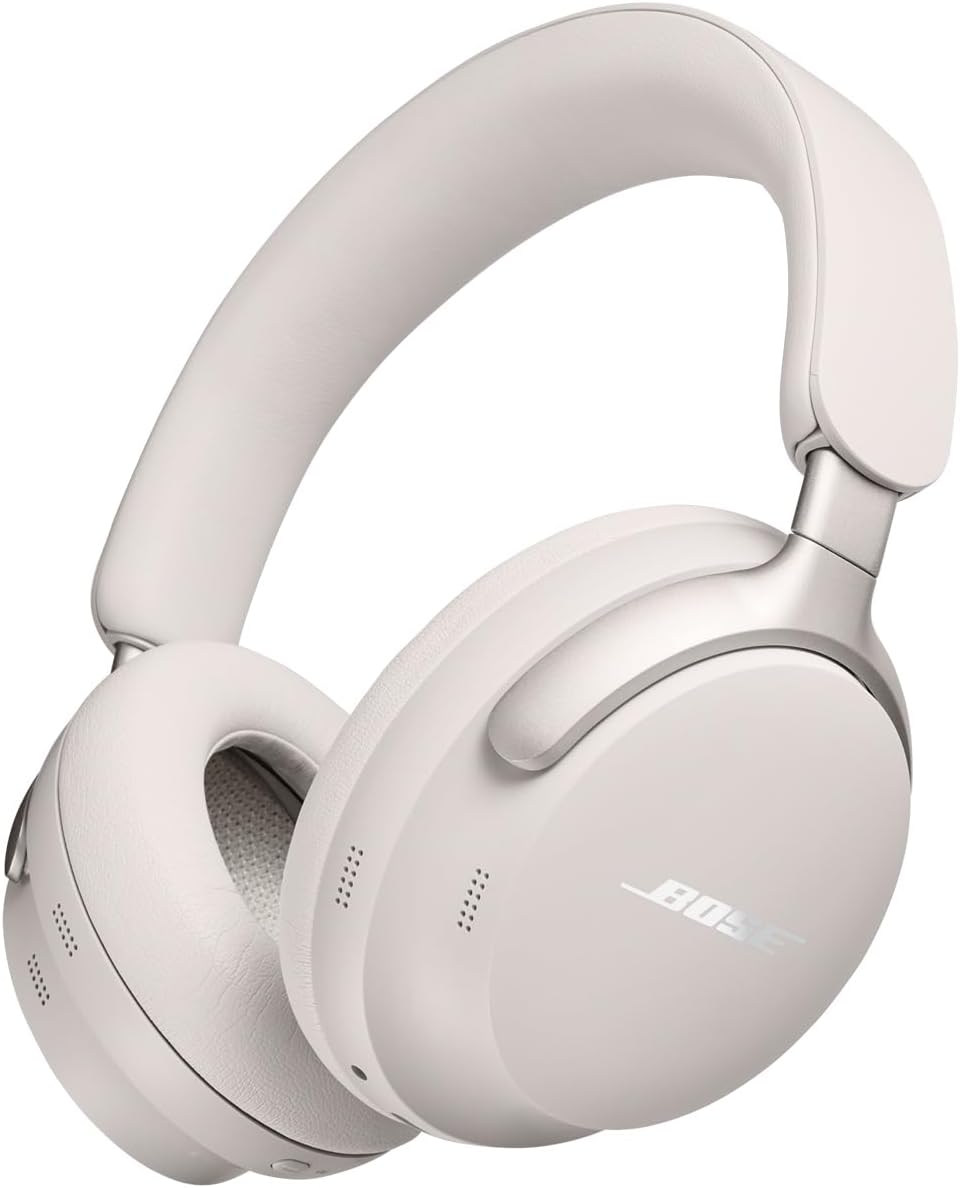The Evolution Of Wireless Headphones: Superior Sound And Comfort

Table of Contents
From Wired to Wireless: The Technological Leap
The limitations of wired headphones were numerous: tangled cords, restricted movement, and the ever-present risk of breakage. Early wireless technology, however, presented its own set of challenges. Range was limited, battery life was short, and audio quality often suffered in comparison to wired counterparts.
-
The introduction of Bluetooth technology and its impact: Bluetooth technology was the game-changer. Its ability to transmit audio wirelessly, albeit initially with limitations, paved the way for the wireless headphone revolution. Early Bluetooth versions struggled with latency and audio quality, but the technology steadily improved.
-
Early adoption and limitations of early wireless headphones: The first wireless headphones were often bulky, expensive, and compromised on sound quality. Battery life was a major concern, requiring frequent charging.
-
Gradual improvements in Bluetooth codecs (aptX, AAC, SBC) and their effect on audio quality: The development of advanced Bluetooth codecs like aptX, AAC, and SBC significantly improved audio fidelity, reducing latency and enhancing the overall listening experience. AptX, in particular, became synonymous with high-quality wireless audio.
-
The rise of proprietary wireless technologies: Beyond Bluetooth, companies began developing their own proprietary wireless technologies, aiming for even better performance. These technologies often focused on minimizing latency and maximizing audio quality for specific headphone models.
The Pursuit of Superior Sound Quality
The quest for superior sound quality in wireless headphones has driven significant innovation. This pursuit involved advancements across various components and technologies:
-
Evolution of driver sizes and materials (dynamic drivers, balanced armature drivers): Driver technology has evolved dramatically. Larger dynamic drivers generally offer more bass, while balanced armature drivers excel in detail and clarity. The materials used in driver construction have also been refined for improved performance.
-
Development of advanced audio codecs for higher fidelity: As mentioned earlier, advanced audio codecs like aptX HD and LDAC have played a crucial role in achieving high-fidelity wireless audio. These codecs transmit more data, resulting in a richer and more detailed sound.
-
Integration of digital signal processing (DSP) for sound enhancement and customization (equalizers): DSP allows for real-time sound processing, enabling features like customizable equalizers, noise cancellation, and other sound enhancements tailored to individual preferences.
-
The rise of high-resolution audio wireless headphones: High-resolution audio (HRA) wireless headphones are designed to reproduce audio at higher bitrates and sampling frequencies than standard CD quality, resulting in a significantly more detailed and nuanced listening experience.
Noise Cancellation: A Game Changer
Noise-canceling technology has transformed the wireless headphone experience.
-
Different types of noise cancellation (passive, active): Passive noise cancellation relies on physical barriers to block sound, while active noise cancellation (ANC) uses microphones to detect ambient noise and generate opposing sound waves to cancel it out.
-
Advancements in ANC algorithms and their effectiveness: ANC algorithms have become increasingly sophisticated, capable of effectively canceling a wider range of frequencies and adapting to changing noise environments.
-
The impact of noise cancellation on battery life: ANC technology does consume more power, impacting battery life. However, advancements have made this impact less significant than in earlier generations.
-
The future of noise cancellation technology: Further improvements in ANC are expected, potentially leading to even more effective noise cancellation with minimal battery drain.
The Focus on Comfort and Design
Comfort and design are equally crucial for a positive listening experience.
-
The evolution of earcup materials (leather, memory foam, fabric): Earcup materials have progressed from basic plastics to luxurious leather, comfortable memory foam, and breathable fabrics, catering to diverse preferences.
-
Improved headband designs for better fit and comfort: Headband designs have become more ergonomic, distributing weight more evenly and providing a secure, comfortable fit for extended listening sessions.
-
Lightweight materials and ergonomic design: The use of lightweight yet durable materials has resulted in headphones that are comfortable to wear for hours.
-
Foldable and portable designs: Many modern wireless headphones feature foldable designs, making them easier to transport and store.
The Rise of Wireless Earbuds: A New Era of Portability
Wireless earbuds have exploded in popularity, offering ultimate portability and convenience.
-
From bulky to incredibly small form factors: Early wireless earbuds were often bulky and noticeable, but technological advancements have led to incredibly small and discreet designs.
-
Improvements in battery life and charging cases: Battery life has significantly improved, and charging cases provide additional power for extended listening.
-
Increased water and sweat resistance: Many earbuds now boast water and sweat resistance, making them suitable for workouts and outdoor activities.
-
Integration of health and fitness tracking features: Some earbuds include health and fitness tracking features such as heart rate monitoring and step counting, blurring the lines between audio devices and wearables.
Conclusion
The evolution of wireless headphones showcases a remarkable journey in audio technology. From overcoming early limitations in wireless transmission to achieving superior sound quality and unparalleled comfort, the advancements have been truly transformative. Whether you prioritize noise cancellation, exceptional sound, or ultimate portability, there's a pair of wireless headphones or earbuds perfectly suited to your needs. Explore the vast range of available options and experience the future of listening with the best wireless headphones for yourself. Discover the perfect pair for superior sound and comfort today!

Featured Posts
-
 D Wave Quantum Qbts Stock Plunge Understanding Mondays Decline
May 20, 2025
D Wave Quantum Qbts Stock Plunge Understanding Mondays Decline
May 20, 2025 -
 Updated Rain Forecast The Most Accurate Timing
May 20, 2025
Updated Rain Forecast The Most Accurate Timing
May 20, 2025 -
 Hmrc Targeting E Bay Vinted And Depop Sellers With Nudge Letters
May 20, 2025
Hmrc Targeting E Bay Vinted And Depop Sellers With Nudge Letters
May 20, 2025 -
 Zirka Golodnikh Igor Dzhennifer Lourens Znovu Stala Mamoyu
May 20, 2025
Zirka Golodnikh Igor Dzhennifer Lourens Znovu Stala Mamoyu
May 20, 2025 -
 Good Morning America Robin Roberts Announces Addition To Her Family
May 20, 2025
Good Morning America Robin Roberts Announces Addition To Her Family
May 20, 2025
Latest Posts
-
 Beiers Two Goals Secure Dortmund Win Against Mainz
May 20, 2025
Beiers Two Goals Secure Dortmund Win Against Mainz
May 20, 2025 -
 Fast Moving Storms Recognizing And Responding To Damaging Winds
May 20, 2025
Fast Moving Storms Recognizing And Responding To Damaging Winds
May 20, 2025 -
 Prepare For High Winds A Guide To Fast Moving Storms
May 20, 2025
Prepare For High Winds A Guide To Fast Moving Storms
May 20, 2025 -
 Bundesliga Leverkusen Victory Delays Bayerns Championship Party Kane Sidelined
May 20, 2025
Bundesliga Leverkusen Victory Delays Bayerns Championship Party Kane Sidelined
May 20, 2025 -
 Staying Safe During Fast Moving Storms With High Winds
May 20, 2025
Staying Safe During Fast Moving Storms With High Winds
May 20, 2025
